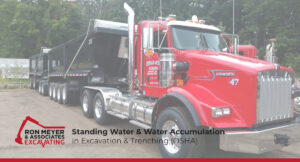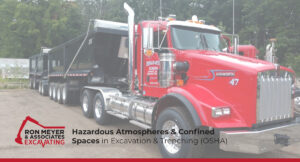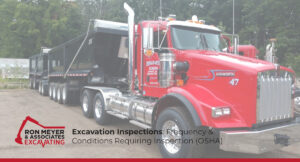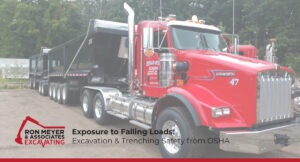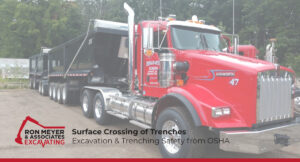Per OSHA, Methods for controlling standing water and water accumulation must be provided and should consist of the following if employees are permitted to work in the excavation: Use of special support or shield systems approved by a registered professional engineer. Water removal equipment, i.e. well pointing, used and monitored by a competent person. Safety […]
Hazardous Atmospheres & Confined Spaces in Excavation & Trenching (OSHA)
Per OSHA, Employees shall not be permitted to work in hazardous and/or toxic atmospheres. Such atmospheres include those with: Less than 19.5% or more than 23.5% oxygen; A combustible gas concentration greater than 20% of the lower flammable limit; and Concentrations of hazardous substances that exceed those specified in the Threshold Limit Values for Airborne Contaminants established […]
Excavation Inspections: Frequency & Conditions Requiring Inspection (OSHA)
Per OSHA, Inspections shall be made by a competent person and should be documented. The following guide specifies the frequency and conditions requiring inspections: Daily and before the start of each shift; As dictated by the work being done in the trench; After every rainstorm; After other events that could increase hazards, e.g. snowstorm, windstorm, […]
Exposure to Falling Loads: Excavation & Trenching Safety From OSHA
Per OSHA, Employees must be protected from loads or objects falling from lifting or digging equipment. Procedures designed to ensure their protection include: Employees are not permitted to work under raised loads. Employees are required to stand away from equipment that is being loaded or unloaded. Equipment operators or truck drivers may stay in their […]
Surface Crossing of Trenches: Excavation & Trenching Safety from OSHA
Per OSHA, Surface crossing of trenches should be discouraged; however, if trenches must be crossed, such crossings are permitted only under the following conditions: Vehicle crossings must be designed by and installed under the supervision of a registered professional engineer. Walkways or bridges must be provided for foot traffic. These structures shall: have a safety […]
Soil Stresses and Deformations in Open Cut Excavation & Trenches
A number of stresses and deformations can occur in an open cut or trench. For example, increases or decreases in moisture content can adversely affect the stability of a trench or excavation. Below are some of the more frequently identified causes of trench failure (per OSHA’s soil mechanics). Tension Cracks Tension cracks usually form at […]
- « Previous Page
- 1
- …
- 4
- 5
- 6
- 7
- 8
- …
- 20
- Next Page »
